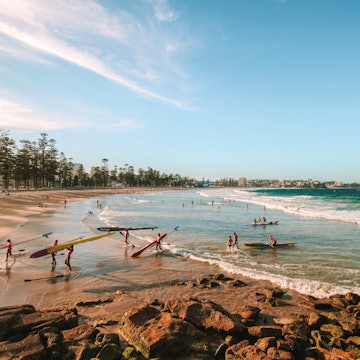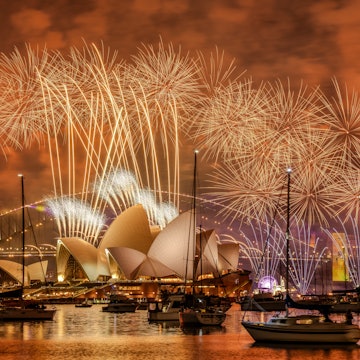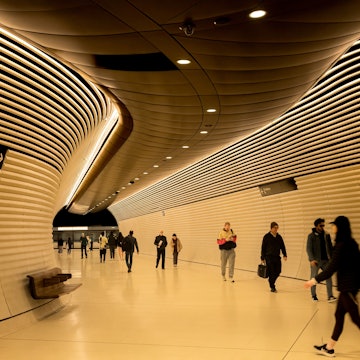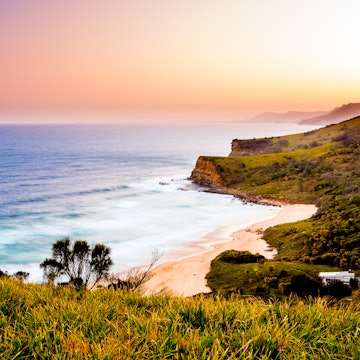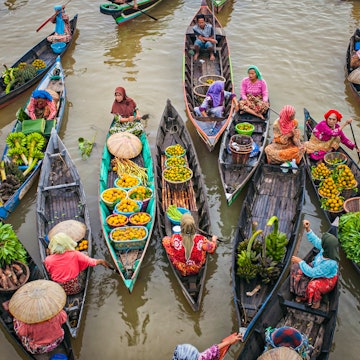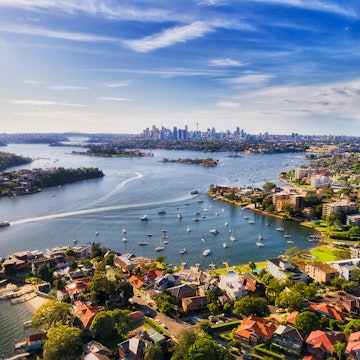
Fiji vs the Cook Islands: which South Pacific paradise is the one?



Relax on the beaches of Fiji's Mamanuca Group islands, Fiji or enjoy views of the mountains on Rarotonga in the Cook Islands. Clockwise from left: Getty Images/iStockphoto, Didier Marti/Getty Images
So you’ve homed in on a dream South Pacific getaway. Lucky you.
You’re excited. You’re feeling the warmth. You’ve already seen the pictures – lush mountains, white-sand beaches, brilliant underwater scenes, poolside sundowners – and, we hate to report, they’re all better in real life. So it’s time for the hard part: which palm-fringed place will best fulfill your desires?
Two destinations usually land at the top of most travelers’ wish lists: Fiji and Rarotonga (and the other Cook Islands). We’re certainly not qualified to weigh the merits of one versus the other – which is why we’ve asked two expert travel writers to make the case for their archipelagic nation of choice.
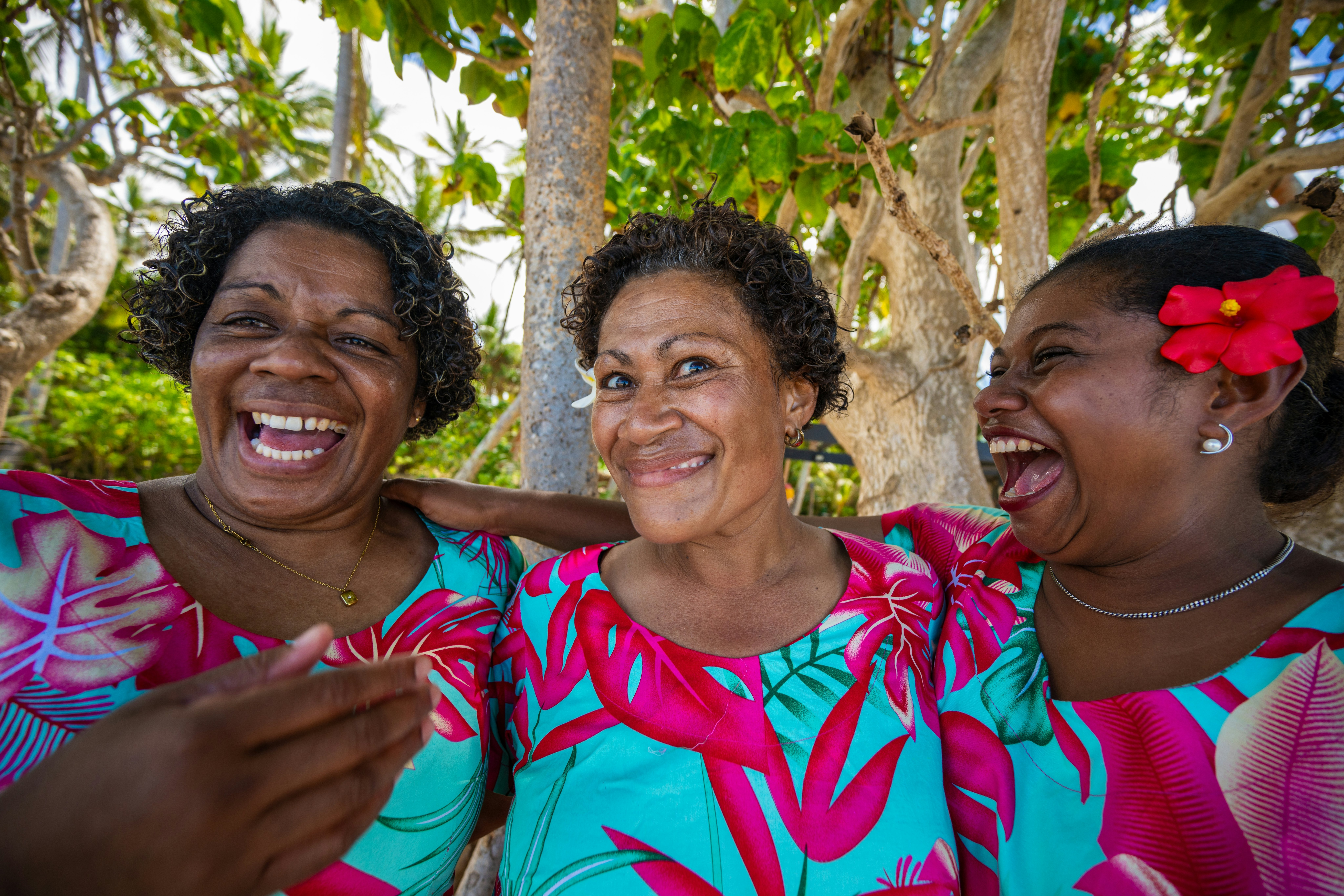
Favor fantastic Fiji
Shaney Hudson grew up in Sydney, spent way too much time living in Europe, and now races to the South Pacific with her family as much as possible in search of warm weather and a resort kid’s club that stays open all day. She enjoys coconut cream in her cocktails.
Choosing between Fiji and the Cook Islands can feel impossible: both offer the tropical trifecta of swaying palm trees, aquamarine water and idyllic beaches. As a frequent visitor with my family to both nations, I appreciate all their many charms. But when push comes to shove and the time off gets locked in, Fiji stands out in almost every way. From its tourism infrastructure to its cultural experiences, opportunities for exploration and diversity of activities, Fiji surpasses the Cooks. Above all else, it’s a place that greets visitors with a warmth that feels like coming home.

A breeze to get to
There’s no sugarcoating it: unless you’re flying from Auckland, it’s a hassle to get to the Cook Islands most of the year, thanks to fewer flight options and long connections. By contrast, Fiji's direct connections to Asia, Australia, New Zealand and the USA make travel here markedly more convenient. (Flights on the nation’s flagship carrier, Fiji Airways, are an especially pleasant option.) Once you’ve arrived in Nadi, Fiji’s well-developed tourist infrastructure becomes apparent through seamless onward options, from ferries and seaplanes to helicopters and private car transfers.
Fiji is big, with 333 islands composing its archipelago. Yet most of Fiji’s resorts cluster around Nadi, the Coral Coast, and the Mamanuca and Yasawa Islands, with many of Fiji’s world-class resorts occupying their own private specks. Brisk competition between major chains and the destination’s growing popularity with travelers mean that most properties have in recent years put big money into renovating their rooms and overhauling their resort facilities.
And while it might be easy to argue Fiji’s resorts form a bubble set apart from the daily life of locals, Fiji’s reputation for hospitality can’t be overstated. Locals are incredibly welcoming, and all visitors will find plenty of opportunities to immerse themselves in the local culture by exploring Nadi’s local markets, sharing kava in villages, joining traditional lovo celebrations or seeking lodging at remote homestays.
For families, Fiji’s welcoming attitude to kids is a huge part of its appeal. Resorts across Fiji cater to young guests with exceptional kids’ clubs that go beyond babysitting and instead focus on high-value learning experiences – like planting mangroves, visiting coral nurseries and practicing such crafts as weaving. (Of course, you shouldn’t discount the fun to be found in custom-made facilities with ropes courses, tree houses and air-conditioned indoor playgrounds.) High-end resorts often even offer personal nannies – and even at the less expensive end of the spectrum, resort operators provide excellent facilities for families without compromising on quality.
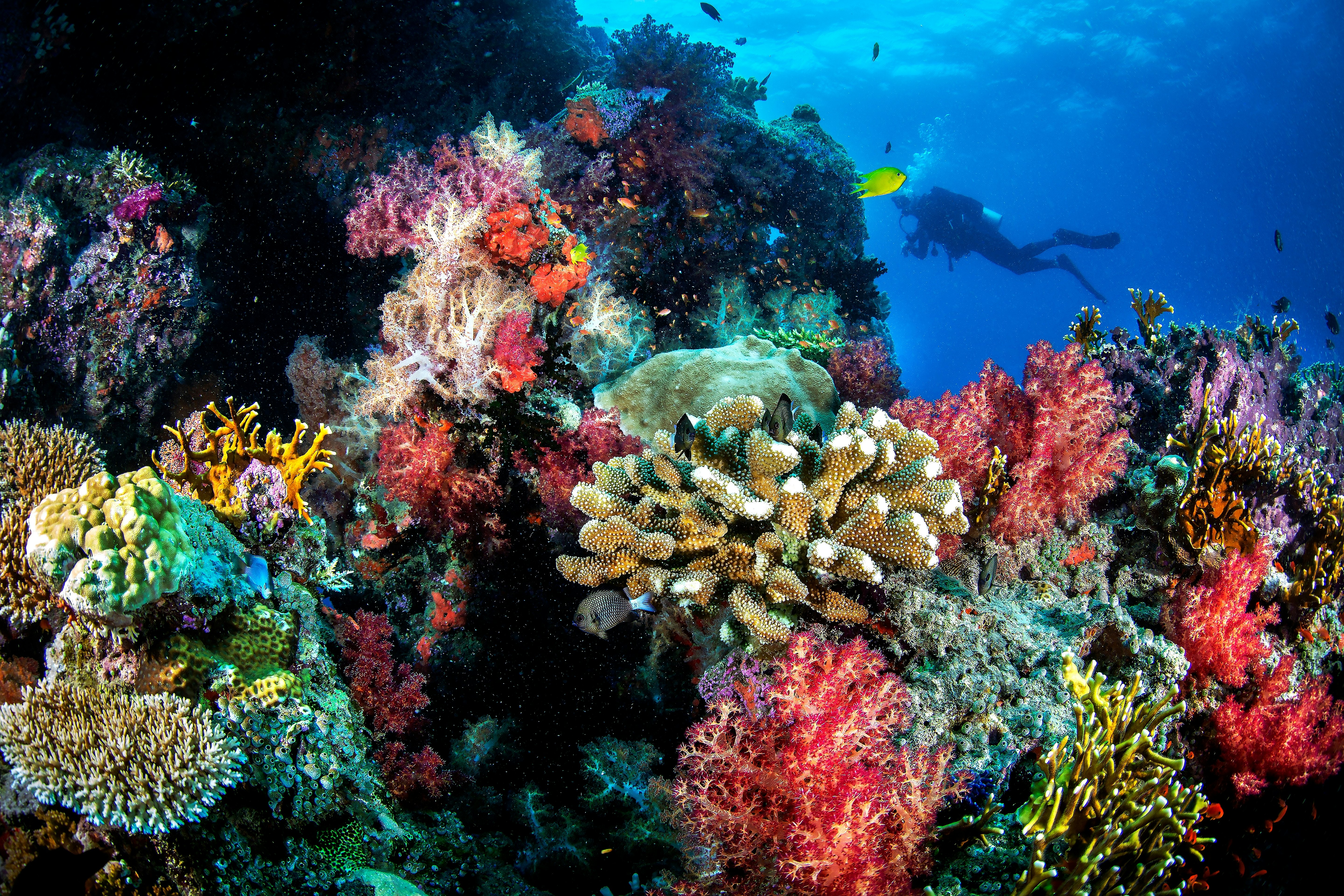
Wander for wonders beyond your resort
Stray beyond your hotel grounds, though, and Fiji offers plenty of thrills: you can try white-water rafting, bike through the jungle or dive beneath ice-cold waterfalls. Unique experiences like jet-boat safaris, river tubing in the highlands and the innovative Ecotrax – cycling paths along repurposed sugarcane railways – have set Fiji apart as an adventure destination.
And while Fiji is good on land, Fiji’s waterworld is simply extraordinary. In the soft-coral capital of the world, visitors can swim with manta rays in the Yasawas, dive with sharks in the Beqa Lagoon or take a deep breath to explore Fiji’s legendary underwater sea caves. Fiji also rates as a surfing destination: in 2025, the World Surf League will host the 2025 World Championship at Cloudbreak, Fiji's best known reef break (although beginners can find their goofy feet at Natadola Beach on the Coral Coast).
Still, even with Fiji’s breadth of experiences, the sheer variety of its islands and the countless adventures you can pursue here, what most sets Fiji apart is its people. Greeting you with an enthusiastic “bula!,” they’ll help you slow down, make you laugh, feel at home – and show you just how amazing Fiji can be.

Count on the Cooks
Craig Tansley was born and bred in Rarotonga before moving to Australia – but every year spends time in his homeland, where his father lived for over 50 years and his once uncle served as prime minister. While he’s not Polynesian by blood, there is coconut water in his DNA.
In Fiji, most visitors stay in large resorts – or they’re whisked away to private island retreats by boat, helicopter or propeller plane as soon as they arrive. But this isn’t a thing in Rarotonga, or anywhere in the Cook Islands for that matter. There’s not a single chain resort or hotel group on Rarotonga or Aitutaki (the only two of the 15 Cook Islands that even have resorts) – no Hilton, no Sofitel, no InterContinental, no Outrigger Resort, no man-made islands. (Compare that to Fiji’s Denarau Island, where nine big-name resorts and hotels are lined up cheek by jowl.) The bottom line: no one spends much time just in their resort in the Cook Islands. In Fiji, some visitors never leave theirs.
If you prefer to dine or drink with only other tourists, stick to Fiji. Because the Cook Islands’ best restaurants and cafes and bars can’t be found in any resort or hotel: they’re local hangouts that deliver cultural immersion with every sandwich order. Yet locals aren’t there simply to serve you, for Cook Islanders are the extroverts of the South Pacific, and eating out is all but the national pastime. They’re out having as much fun as you are.

Rarotonga rocks...
The Cooks’ largest island, Rarotonga can be circumnavigated at a speed limit of 50kmh (30mph) – or 40kmh (25mph) on a motor scooter – in just 40 minutes. It’s tiny, sure – but that’s what makes it so accessible. Fiji’s largest island, Viti Levu, requires 12 hours to circle; even driving from a resort to the international airport can take up to three hours. I like the fact that in Rarotonga sunrises and sunsets over the water are only 20 minutes apart.
With fewer than 5000 residents, the Cook Islands’ capital “city,” Avarua on Rarotonga, doesn’t have traffic jams (it doesn't even have traffic lights); in Fiji’s largest city, Suva, you’ll find nearly 200,000 inhabitants and gridlocked traffic at rush hour. Avarua also lies beside the lagoon, framed by huge green mountains, and its tallest building can’t be taller than the highest coconut tree. (Seriously. It’s the law.) There’s no part of the city that’s ever unsafe, no matter what time of night you visit – unless, that is, you choose to walk under a coconut tree when it’s windy.
I always rent a car – or, better yet, a motor scooter – since driving is safe and easy, and most of all because any journey here is as rewarding as the destination. I breathe in the fragrance of tipani (frangipani) and tiare maori blooms as I go, and watch for whales breaching clean out of the Pacific from the Ara Tapu coastal road. Then, I go a short distance inland to cruise the 1000-year-old Ara Metua, one of the Pacific’s oldest roads, where I’m sure to encounter more more pigs and goats than cars, and enjoy close-up views of the 24 mountains that jut up from the island’s totally undeveloped hinterland. Anyone who thinks the Cooks are just about lagoons hasn’t seen these mountains from here. Forget Fiji as competition; when it comes to South Pacific mountains, only Tahiti compares.
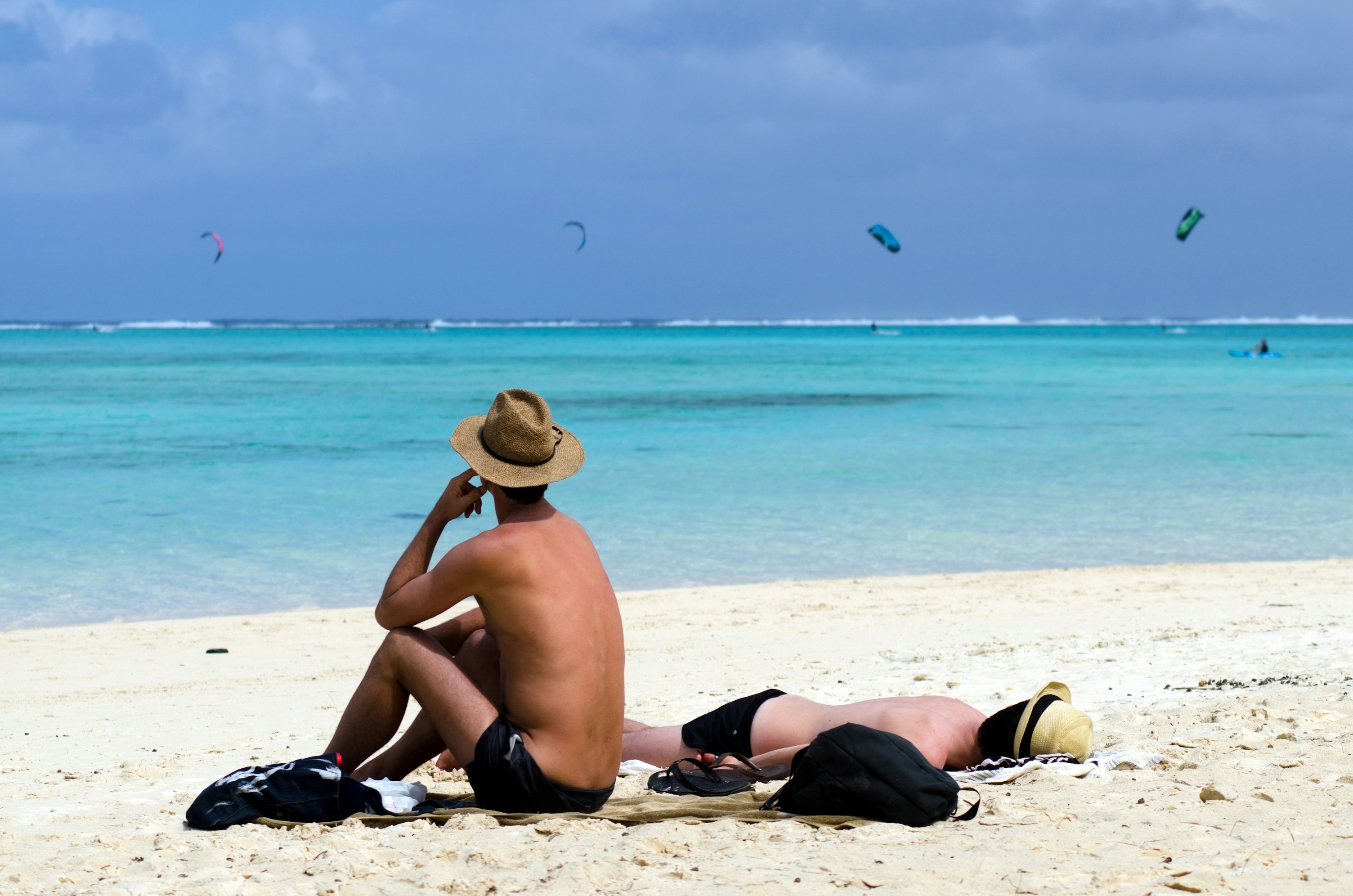
…and Rarotonga is only the beginning
A few of the Cook Islands, barely 40 minutes’ flying time from Rarotonga, receive fewer than 100 tourists a year. Where Fiji’s “other” islands like the Yasawas and the Mamanucas are some of the country’s most popular destinations for international visitors, Cook Islands like Mangaia, Mitiaro and Mauke don’t have a single resort or hotel on them. Forget kids’ clubs: you can stay with a local family here – the sort of immersive cultural experience you won’t find at any Fiji resort. Often, I’m the only visitor on a given island. Where else can you get that in 2025?
I left the Cook Islands in the early 1980s, but not much has changed in the decades since. On Rarotonga, it’s possible to experience a way of life that many of us are nostalgic for in our fast-paced world. Sure, I can get soy lattes that match some of Auckland’s finest hipster offerings – yet otherwise, life is the same as it has always been. After you’ve prepared for your trip and touched down, you can let your kids roam free, and forget about using the hotel safe.
And when 50kmh starts to feel too fast, you’ve officially clicked into island time. Enjoy the ride.





